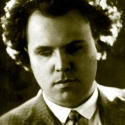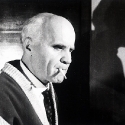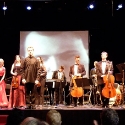A pivotal contributor to the establishment and development of Bulgarian classical music, Petko Staynov built his compositional style on the solid tradition of the Western-European School. Yet his music offers a unique quality. While his music features elements of the Balkan and Slavic traditions, it has a deep relationship with Bulgarian folk music.
For Staynov, the creative process was strongly rooted in his folk heritage. “The folk song has always been a source of creative impulse and inspiration for me,” said Staynov, who was coming into his own as a composer at a time when Bulgaria was defining itself as an emerging nation, politically and culturally. Keenly aware that Bulgaria needed to forge a cultural identity for itself, Staynov saw music rooted in Bulgaria’s most ancient traditions as means to unification and a catalyst in this process of individuation. A deep connoisseur and dedicated researcher of the Bulgarian folk song, Staynov recreated the beauty of the Bulgarian folk melody through the language of the classical compositional style.
Traditional tunes were rarely cited. Instead, in composing his vivid and expressive melodies Staynov selected and reworked features of the folk melody that in his perspective represented the unique strengths of Bulgarian traditional music. His classically shaped themes are inspired by the intonations and structure of the melody of the Bulgarian folk song. Traditional instrumental features such as short repeated phrases, specific instrumental intonations and ornaments are treated as a powerful point of development. Staynov’s approach to classical harmony is strongly individual and determined by the uniqueness and strength of his melodies. Impressively clear and structured, Staynov’s harmony shows the precision of classical thinking enriched by the smoothness and freedom of modal transformations. The latter are based on the diatonic nature of the Bulgarian folk music. Furthermore, traditional forms of Bulgarian polyphony such as drones are a feature of Staynov’s compositions.
Notwithstanding this close connection to Bulgarian folklore, much of Staynov’s epic and deeply emotional symphonic music conveys also a sense of history and of universal and timeless emotions. Deep personal and national sorrow but also profound pride and hope shape his compositions into testaments to his life, struggles, and aspirations and to Bulgaria’s history and arduous path towards self-determination.
Staynov also composed choral music. His choral songs are among the preferred repertoire of Bulgarian choirs in Bulgaria and beyond. His early songs are often lyrical with humorous accents and evoke poetic and dream-like states that gradually gain in emotional intensity culminating in a radiant climax. By the mid 1930’s Staynov’s vocal works had evolved into elaborated monumental ballads comparable in complexity to his symphonic music. These ballads laid the foundation for a whole new genre and fused fairy-tale and fantastic elements with realistic and folk ones. Increasingly abstract in their reference to what is Bulgarian yet with a clear narrative character, Staynov’s often tragic and/or epic ballads reflect the mostly tumultuous years of Bulgaria’s contemporary history.
While Staynov was dedicated to creating a personal style expressive of values unique to Bulgarian classical music he also believed that his music would hold deep universal resonance and enrich Europe’s musical heritage. Unfortunately, twentieth century history with its mix of wars and restrictive regimes prevented his music from reaching as far as the United States and his legacy and contribution to world music has not yet been fully acknowledged.




